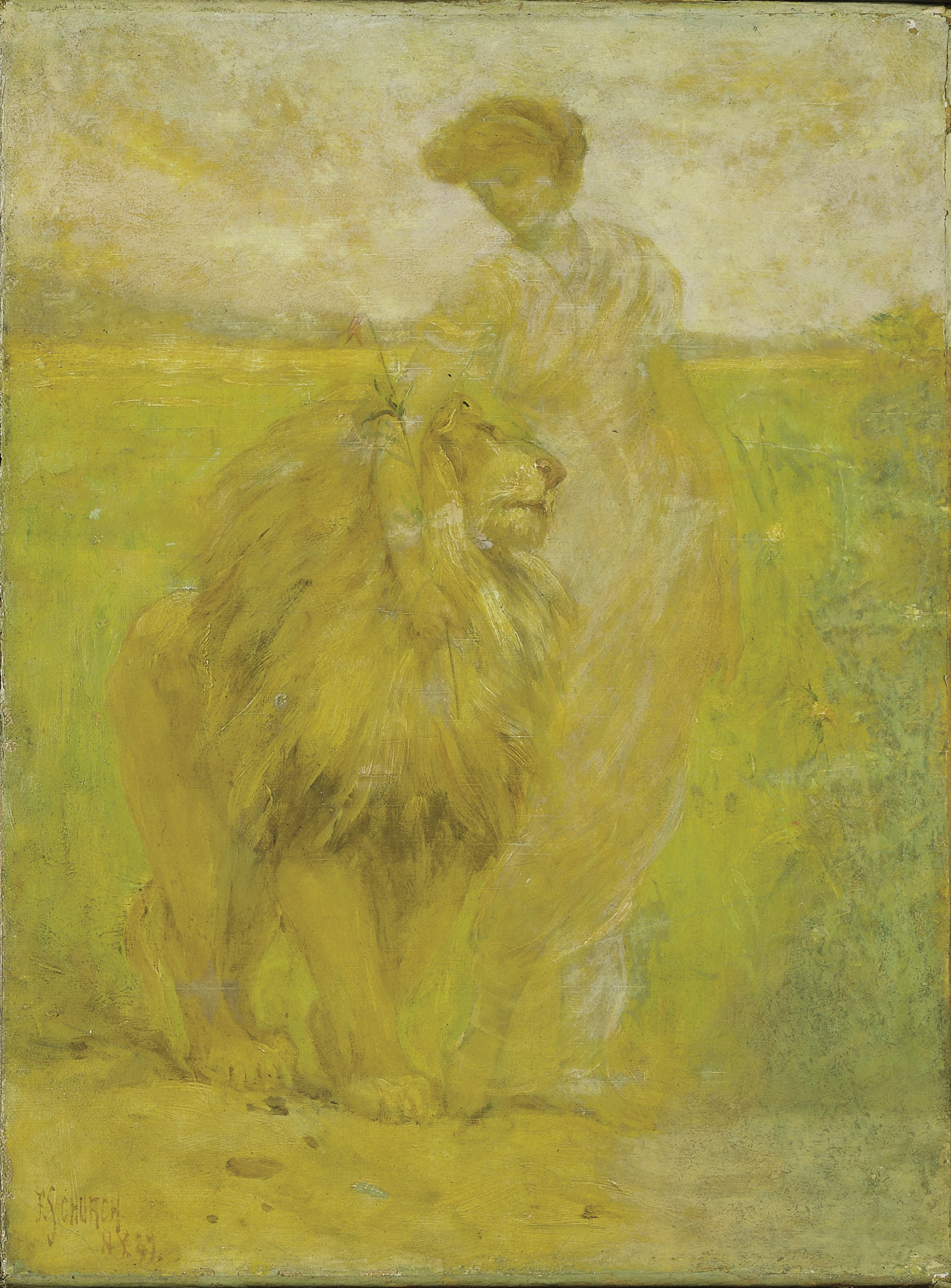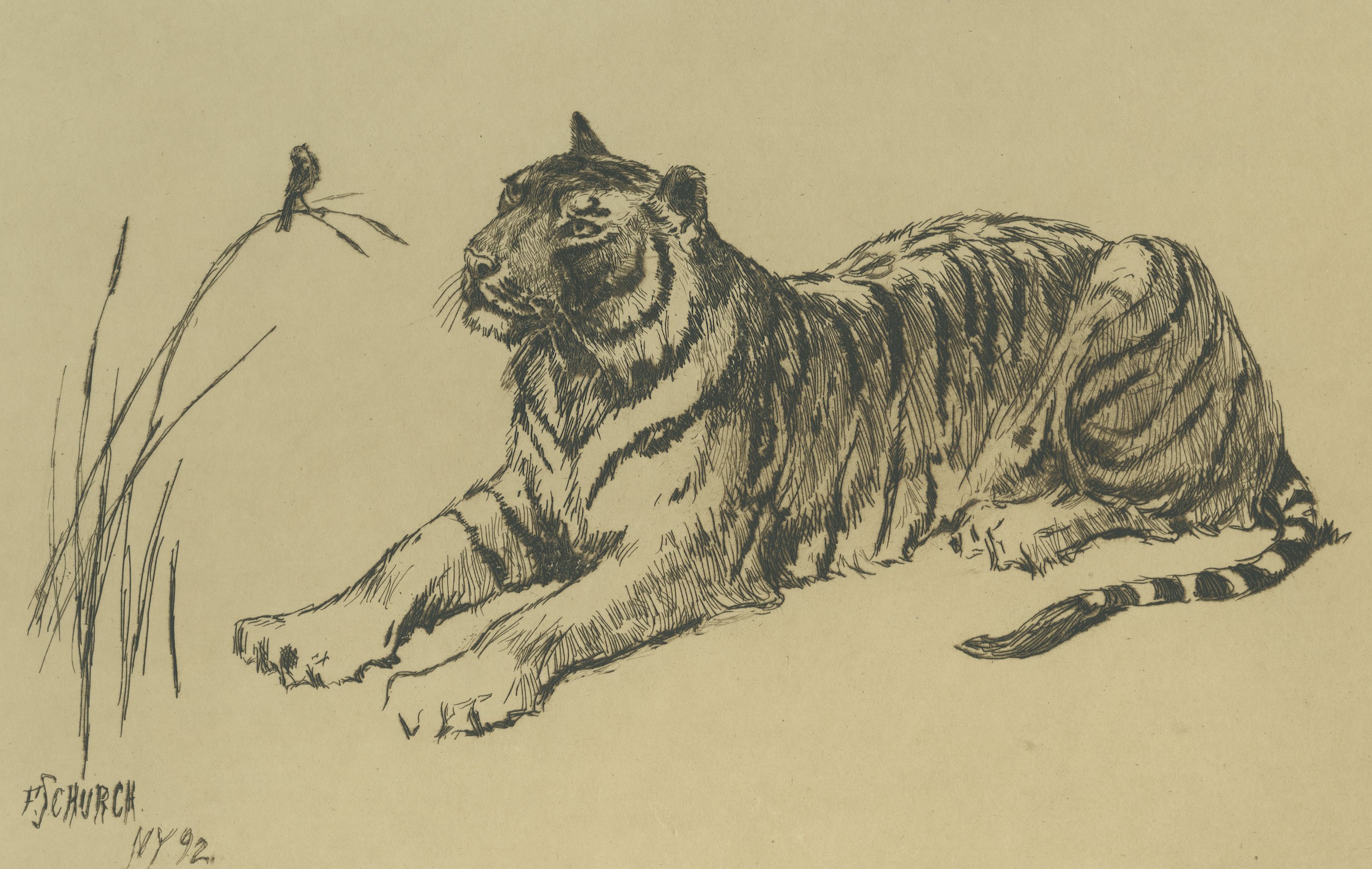In 1863, Frederick Stuart Church was being groomed by his parents for a life of business. But with the American Civil War in full swing, he enlisted in the Chicago Mercantile Light Artillery. Two years later, upon his return from some of the most violent campaigns of the war’s western theater, Church cast aside his business ambitions and moved to New York City to become an artist.
Though he initially began as an engraver for Harper’s Weekly, painting afforded Church a different method with which to achieve the tenderness he often strove for in his etchings. Supremacy depicts a walking embrace between a woman and a lion in vivid, impressionistic color. Her arm over his head, he nuzzles into her, quite literally attached at the hip.
Whereas Church often took greater measures to delineate the landscape in and around his painted figures, the background of Supremacy is so clouded in color that one can hardly make out the horizon. A haze appears around the subjects, bordering them in a shady veil that recalls the woman’s dress. This causes the lion to appear more solid than her, the color of his mane dominant in the composition.
The gold of the lion’s fur finds its complement in the ground beneath him, while the pink, purple, and white of the woman’s diaphanous gown is reflected in the sky above them. This serves to balance the composition, creating a sweep of one color up from the bottom and another down from the top. It’s an abstract yin-yang, broken only by the deeper green that rises from the bottom right of the canvas.
Having worked so long in ink, it seems Church took time to play with color in this painting. This piece is a prime example of the painter’s combination of both measured composition—evident in other works such as Woman and a Crane (1892)—and bursting color palette. To see more examples of Church’s work as both an engraver and painter, check out the article"Frederick Stuart Church: Painter of Harmony" on DailyArt Magazine!
- Anthony DeFeo


 Frederick Stuart Church
Frederick Stuart Church